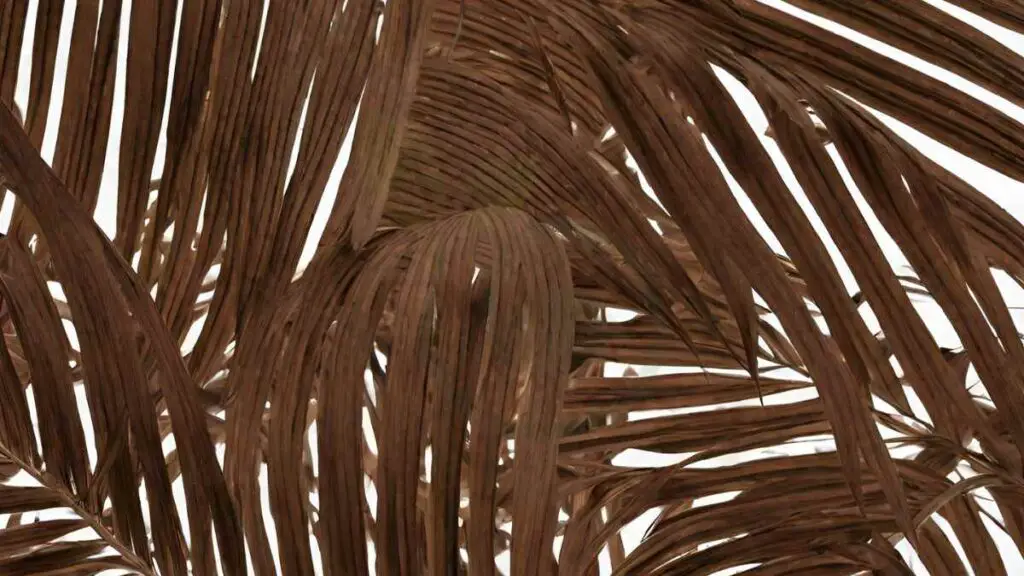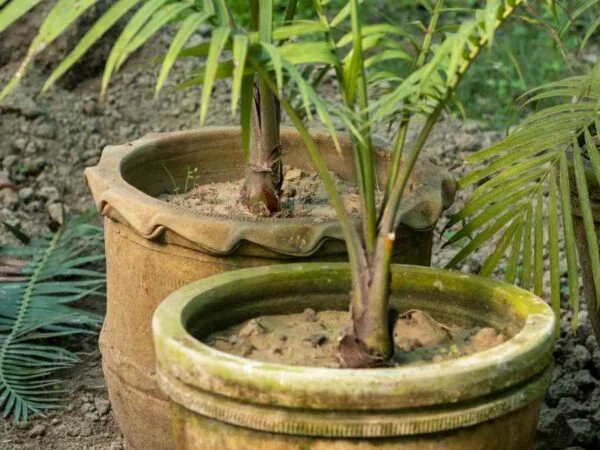Did you know that over 70% of areca palm owners struggle with unsightly brown tips and spots on their plants? Fear not, as we delve into the common causes such as brown spots and simple solutions to revive your beloved green companion with help and feed. From improper watering habits to inadequate light exposure, we uncover the mysteries behind this prevalent issue. With our expert tips and information, you can elevate your plant care skills, ensure your areca palm thrives in its environment, and compost. Say goodbye to brown tips and hello to lush, vibrant foliage by implementing our practical advice today.
Key Takeaways
- Proper humidity levels are essential for the health of your Areca Palm, aim for 50-60% humidity to prevent brown tips.
- Maintain temperatures between 65-75°F for optimal growth and to avoid browning of the palm's leaves.
- Water your Areca Palm regularly, ensuring the soil is consistently moist but not waterlogged to prevent brown tips.
- Use well-draining soil and fertilize lightly to provide necessary nutrients without causing tip browning.
- Place your Areca Palm in bright, indirect light to promote healthy growth and avoid leaf discoloration.
- To prevent brown tips on your Areca Palm, follow a consistent care routine and monitor for any signs of stress or nutrient deficiencies.
Areca Palm Overview
Growth Habits
Areca palm develops in clusters and can grow up to 6-7 feet tall, making it a popular choice for indoor decoration. This plant thrives best in bright, indirect light.
Ideal Conditions
For optimal growth, the areca palm requires well-draining soil to prevent root rot and benefits from regular misting to maintain humidity levels. It prefers temperatures between 65-75°F to thrive.
Common Challenges
Areca palms are prone to developing brown tips when exposed to low humidity levels, indicating a need for increased moisture. They are vulnerable to yellow leaves from underwatering, necessitating consistent watering practices. Moreover, these plants are susceptible to various pest infestations that can impact their health.
Humidity Essentials

Ideal Levels
Maintain humidity levels at 50-60% to ensure the optimal growth of your areca palm. Water the plant when the top inch of soil is dry to prevent overwatering. Providing indirect sunlight is crucial for its overall health and development.
Monitoring Tips
Check the soil moisture weekly to avoid waterlogging or dehydration issues. Inspect the foliage regularly for any signs of discoloration, which could indicate a humidity imbalance. Monitor humidity levels consistently to create a suitable environment for your plant.
Adjusting Humidity
Increase humidity around your areca palm by misting leaves regularly with water. For more consistent levels, consider investing in a humidifier to maintain an ideal environment. If needed, relocate your plant to a more humid environment within your home.
Temperature Requirements
Optimal Range
Maintain humidity between 50-60% to keep your areca palm healthy and thriving. Ensure that temperatures stay within 65-75°F for optimal growth. Provide the plant with bright, indirect light to support its development.
Seasonal Adjustments
Adjust the watering frequency of your areca palm based on the season to prevent over or under-watering. Monitor temperature changes and adjust light exposure accordingly to meet the plant's needs. Be mindful of humidity fluctuations that can impact the plant's health.
Heat Stress Signs
Watch out for signs of heat stress in your areca palm, such as wilting leaves, which indicate a need for adjustments in care. Look for scorched foliage, a clear sign of excessive heat exposure. Consider adjusting the plant's placement to avoid direct heat sources that can harm its leaves.
Watering Practices
Frequency
Water your areca palm every 1-2 weeks to keep the soil moist but not waterlogged. Fertilize monthly during the growing season to promote healthy growth. Prune as needed to maintain the plant's shape and remove any damaged or yellowing fronds.
Signs of Overwatering
Watch out for yellowing lower leaves, which can indicate overwatering in your areca palm. Check the soil for being soggy or waterlogged, as this can lead to root rot. If you notice a foul odor coming from the roots, it may be a sign of overwatering issues.
Proper Drainage
Ensure that the pots you use for your areca palm have drainage holes at the bottom to prevent water accumulation. Use a well-draining potting mix that allows excess water to flow out easily. Avoid letting water sit at the bottom of the pot, as this can lead to root rot and other moisture-related problems.
Soil and Fertilization
Soil Mix
When it comes to soil mix, opt for a combination of peat moss and perlite. This blend provides good aeration for the roots. Consider adding sand to the mix to enhance drainage, crucial for preventing waterlogging. A slightly acidic soil pH level is ideal for areca palms, promoting optimal nutrient absorption.
Fertilizer Types
For fertilizer types, select a balanced liquid fertilizer specifically formulated for palm plants. This type of fertilizer ensures that essential nutrients are evenly distributed to support healthy growth. Alternatively, you can use a slow-release fertilizer, which gradually releases nutrients over time, providing a convenient feeding solution. Be cautious not to over-fertilize the plant as this can lead to fertilizer burn, damaging the delicate roots.
Feeding Schedule
In terms of the feeding schedule, aim to feed your areca palm every 4-6 weeks during its active growing season. Dilute the fertilizer to half strength before application to prevent any potential root damage due to excessive nutrients. It's important to skip feeding the plant during the winter months when growth slows down naturally. This allows the plant to rest and prepare for its next growth phase.
Light and Placement
Light Requirements
Areca palms thrive in bright, indirect light. Direct sunlight should be avoided to prevent scorching of the leaves. To ensure even growth, regularly rotate the plant for balanced light exposure.
Best Locations
These palms are ideal for spaces like living rooms or offices that offer adequate lighting. They also do well in bathrooms with higher humidity levels, making them a perfect addition to such spaces. They thrive in well-lit corners, adding a touch of greenery to any room.
Avoiding Direct Sunlight
To shield the areca palm from damage, it's crucial to protect it from harsh afternoon sun rays. Similarly, direct morning sunlight should be avoided to prevent leaf burn. Providing filtered light is essential for gentle exposure that promotes healthy growth.
Brown Tips Explained

Causes
Areca palm brown tips typically result from low humidity levels, causing the plant to dry out. This can lead to brown spots and browning of the leaf edges. Yellow leaves may also indicate underwatering, where the plant is not receiving enough water to thrive. Pest issues such as spider mites or mealybugs may arise due to neglect and lack of proper care.
Prevention Strategies
To prevent brown tips on your areca palm, it's essential to increase humidity levels around the plant. You can achieve this by misting the leaves regularly or using a humidifier in the room. Ensure consistent watering for the plant, allowing the soil to slightly dry out between waterings but avoiding overwatering that can lead to root rot. Regularly inspect your plant for any signs of pests such as webbing or tiny bugs crawling on the leaves.
Treatment Solutions
If your areca palm already has brown tips, consider trimming them off using clean scissors to promote new healthy growth. Adjust your watering schedule if you notice yellow leaves, ensuring that the plant receives adequate moisture without being waterlogged. For pest control, opt for natural remedies like neem oil or insecticidal soap to combat common pests like spider mites or mealybugs effectively.
Additional Care Tips
Pruning Techniques
Prune brown or yellowed fronds to maintain plant health and appearance. Remove any dead or damaged leaves promptly. Shape the areca palm to enhance its aesthetic appeal and promote growth.
Pest Control
Combat common pests by using neem oil, a natural remedy that is effective and safe for plants. Regularly inspect the plant for signs of spider mites and take action promptly. If necessary, isolate affected plants to prevent pest spread.
Seasonal Care
During winter, adjust watering habits to prevent root rot caused by overwatering. Increase humidity levels in dry seasons to mimic the plant's natural habitat. Shield the areca palm from cold drafts in winter to avoid stress and damage.
Our Top 3 Care Tips
Consistent Humidity
Maintain consistent humidity levels by checking them weekly to ensure they are within the ideal range. Utilize a humidity tray to provide stable moisture for your areca palm. Consider grouping your plants together to create a microclimate that increases humidity levels naturally.
Balanced Watering
Ensure your areca palm receives balanced watering by allowing the soil to dry slightly between waterings. Water thoroughly each time, but always ensure proper drainage to prevent root rot. Adjust your watering frequency based on the seasonal needs of the plant and always check the soil's moisture content before watering again.
Regular Monitoring
Regularly inspect the leaves of your areca palm for any signs of discoloration, which could indicate issues with light, water, or nutrient levels. Check the soil moisture regularly by inserting your finger into the soil to assess its dampness. Keep a close eye on your plant's overall growth and health to catch any problems early on.
Summary
In caring for your areca palm, remember the importance of humidity, temperature, watering, soil, light, and placement. Understanding why brown tips occur will help you address this issue effectively. By following our top three care tips, you can ensure your areca palm thrives and remains lush and healthy. Remember to monitor its conditions regularly and make adjustments as needed.
Take action today by implementing these care practices to keep your areca palm looking its best. Your attention to detail and proactive care will result in a vibrant and flourishing plant that adds beauty to your space. Stay committed to providing the optimal environment for your areca palm, and you'll enjoy a stunning indoor oasis for years to come.
Frequently Asked Questions
How can I prevent brown tips on my Areca Palm?
To prevent brown tips on your Areca Palm, ensure proper watering practices, maintain adequate humidity levels, place the plant in a location with indirect sunlight, and avoid over-fertilizing. Trim any brown tips promptly to promote healthy growth.
What are the ideal temperature requirements for an Areca Palm?
Areca Palms thrive in temperatures between 65-75°F (18-24°C) during the day and slightly cooler at night. Avoid exposing the plant to temperatures below 50°F (10°C) as it can lead to damage.
Why is humidity essential for Areca Palms?
Areca Palms require high humidity levels of around 50-60%. Insufficient humidity can lead to browning of leaf tips and edges. To increase humidity, mist the plant regularly, use a humidifier, or place a tray of water near the plant.
How often should I water my Areca Palm?
Water your Areca Palm when the top inch of soil feels dry to the touch. Water thoroughly but ensure proper drainage to prevent waterlogging. Adjust watering frequency based on environmental conditions like temperature and humidity.
What type of soil is best for an Areca Palm?
Use a well-draining potting mix rich in organic matter for your Areca Palm. A mixture of peat moss, perlite, and sand works well. Fertilize sparingly as excessive fertilization can lead to nutrient imbalances and damage to the plant's roots.
Image Source: Paid image from CANVA





